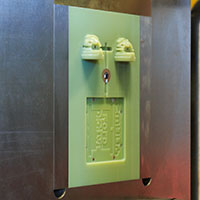 Founded in 1970, Swany Company Ltd., located in Nagano, Japan, initially prospered as a small manufacturing company building micro-motors for electrical appliances. But in the 1990s, when major manufacturers began moving their facilities to more cost-competitive locations in Asia, Swany's business declined steeply.
Founded in 1970, Swany Company Ltd., located in Nagano, Japan, initially prospered as a small manufacturing company building micro-motors for electrical appliances. But in the 1990s, when major manufacturers began moving their facilities to more cost-competitive locations in Asia, Swany's business declined steeply.
Help arrived in 2010 when Yoshihiro Hashizume became the company's manager. An engineer experienced in many facets of product development, Hashizume quickly shifted Swany's business focus from manufacturing to new product design. Today, the company works with nearly 200 different manufacturers in a range of industries, assisting with product planning, conceptual design, and prototyping.
To compete in this new market, Hashizume knew that the company would need to present its ideas in ways other than drawings and computer models; it needed to create immediate excitement by placing functional and sophisticated prototypes in its customers' hands.
With this strategy in mind, Swany installed an Objet® Connex™ 3D Printer in 2011.
Injection molding – the process of injecting plastic material into a mold where it cools and hardens to the configuration of the cavity – is the world's most popular mass-manufacturing process. It is used to mass-produce highly accurate, and often complex, three dimensional (3D) parts and products.
The development of injection molds, however, is often expensive and time consuming. Generally made from steel or aluminum, each mold costs tens of thousands of dollars and takes weeks to make. But to test a new injection molded part for design, fit and functionality, manufacturers had few options besides creating a metal mold.
To help its customers address these issues, Swany began experimenting with 3D printers.
Now as a new product nears production, Swany builds a 3D printed mold, which is placed onto an injection molding machine to create a limited number of prototypes in end-use materials. The prototypes replicate true-to-life results at a fraction of the time and cost associated with using traditional metal molds.
Because prototype molds and one-of-a-kind creations can be made inexpensively within just a few hours and at a modest cost, Hashizume encourages the company's engineers to use the Connex 3D Printer as a way to explore new ideas, solutions and concepts. He explains, "It is important for our engineers to be able to make mistakes. If they are afraid to fail, they won't challenge orthodox thinking and create new ideas. Without new ideas, we cannot compete."
Swany's engineers instantly became fans of the Connex 3D Printer and its ability to print 14 material properties simultaneously in a single part. It has allowed the company to give shape to its customers' most creative ideas quickly, easily and cost effectively.
One example of this process was a recent assignment to design a new automotive LED headlight reflector.
Swany's engineers 3D printed a series of molds using their prototype designs, and then injected acrylic resin into each mold. In each case, only a small handful of parts were produced, but that was all they needed to make their evaluations. The 3D printed injection molds allowed the engineers to precision craft their designs easily and efficiently, which in turn, allowed their customer to put the final design into full production and move its product to market faster.
Expanding the Work Force
As versatile as they are, 3D printed molds are not intended to be replacements for metal injection molds. They cannot withstand the constant heat and pressure needed to handle long production runs. As a result, printed molds do not pose a competitive threat to traditional mold-making companies; each has its place in the production cycle.
Hashizume concludes, "Some people say 3D printing takes jobs away from mold companies. But here at Swany, 3D printing is creating jobs for them. It would be great if this kind of new partnership can help the economic revival of manufacturing in Japan."




